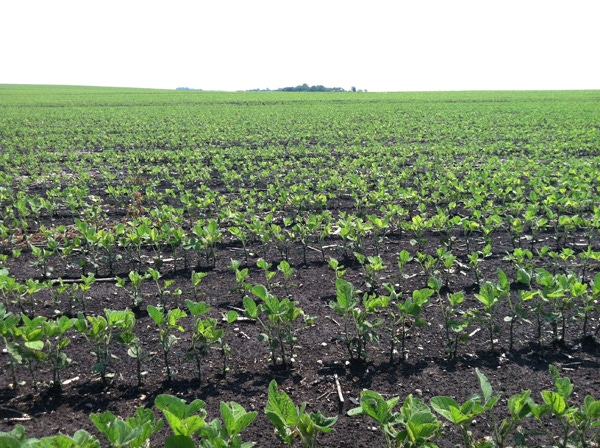July 11, 2012

Above-average temperatures and mostly sunny skies dominated the heart of the United States during June, providing producers ample time to complete fieldwork and boosting phenological development of this year's crops.
However, the combination of high temperatures and below-average rainfall negatively impacted row-crop conditions in many areas. Temperatures climbed to more than 6° above normal in portions of the central Great Plains and Rocky Mountains, while rainfall accumulations totaled less than 50% of normal in areas of the Corn Belt, Delta, Great Plains, Rocky Mountains and Southwest. Elsewhere, temperatures along the coasts were near to below normal. Rainfall in the Pacific Northwest, as well as Florida, Maine, and portions of the Great Lakes region totaled more than 200 percent of normal.
Following one of the quickest planting paces on record, 97% of the nation's corn crop was emerged by June 3, 22 percentage points ahead of last year and 14 percentage points ahead of the five-year average. Scarce rainfall coupled with record-breaking temperatures created unfavorable growing conditions in many of the major corn-producing regions. Prolonged dryness led to early month reports of rootless corn syndrome in portions of Missouri, while the need for additional moisture was evident in many Iowa cornfields with wilted plant leaves.
Silking was underway mid-month, with 5% of the crop reported in the critical reproductive stage by June 17, 3 percentage points ahead of both last year and the five-year average. Despite continually declining soil moisture levels, silking was rapid during the latter half of the month as sunny skies promoted crop development. As July began, one-quarter of this year's corn crop was at or beyond the silking stage, 20 percentage points ahead of last year and 17 percentage points ahead of the five-year average.
Overall, 48% of the corn crop was reported in good-to-excellent condition on July 1, compared with 72% on June 3 and 69% from the same time last year. This represents the lowest good to excellent rating for this week since 1988 when 23% of the crop was reported in good-to-excellent condition.
Soybean producers were wrapping up planting this year's crop as June began, with overall progress 20 percentage points or more ahead of normal in 11 of the 18 major estimating states by June 3. Warmer-than-normal temperatures promoted rapid crop emergence in most states early in the month, and by June 17, emergence had advanced to 95% complete, 18 percentage points ahead of last year and 14 percentage points ahead of the five-year average. Blooming was underway throughout most of the major soybean-producing region by June 17, but was most advanced in the Delta. Above-average temperatures promoted steady phenological development throughout the month, but – when coupled with a severe lack of soil moisture – negatively impacted crop conditions. As July began, over a quarter of the soybean crop was at or beyond the blooming stage, well ahead of both last year and the five-year average. Overall, 45% of the soybean crop was reported in good-to-excellent condition, compared with 65% on June 3 and 66% from the same time last year. This represents the lowest good-to-excellent rating for this week since 1988 when 18% of the crop was reported in good-to-excellent condition.
You May Also Like




